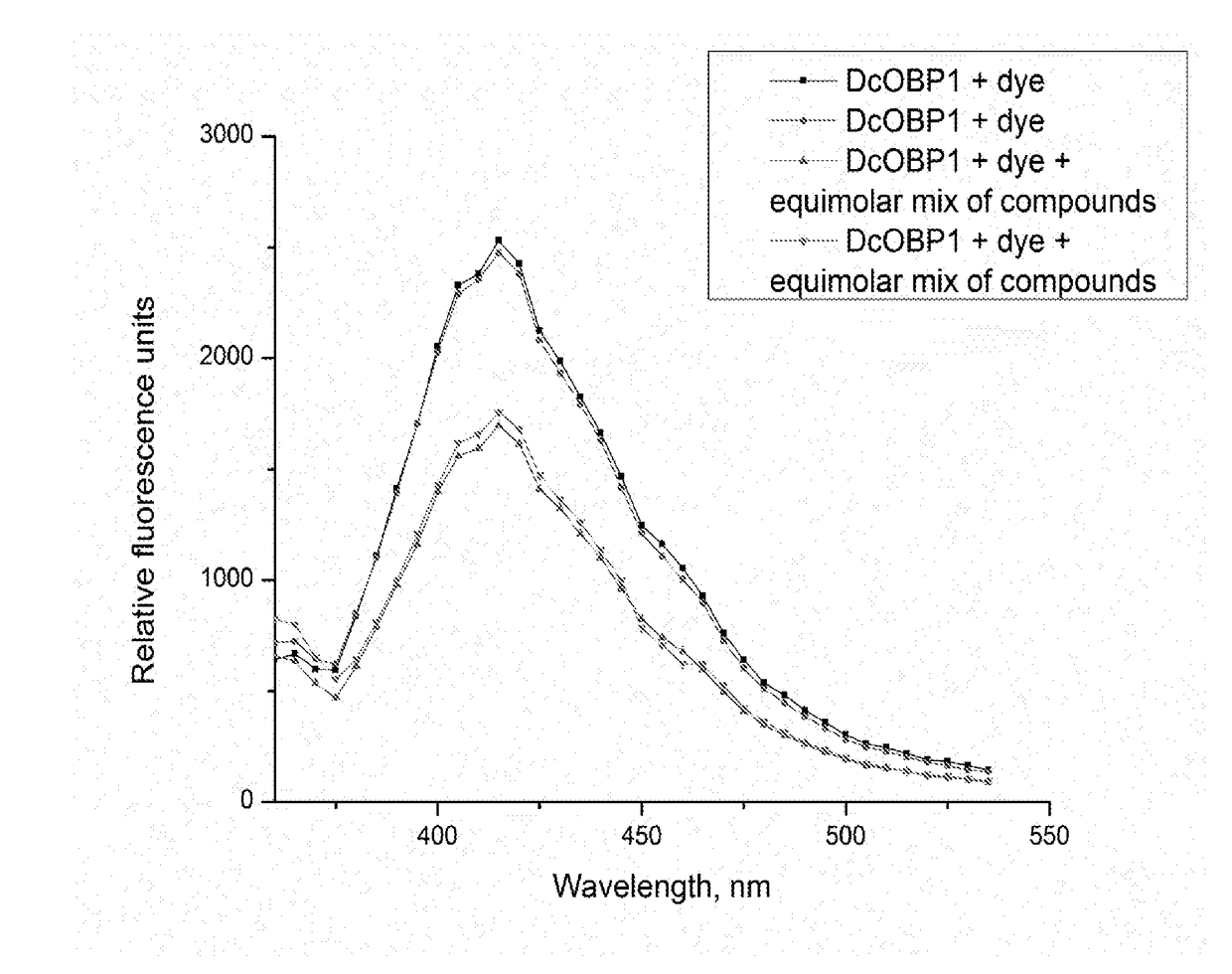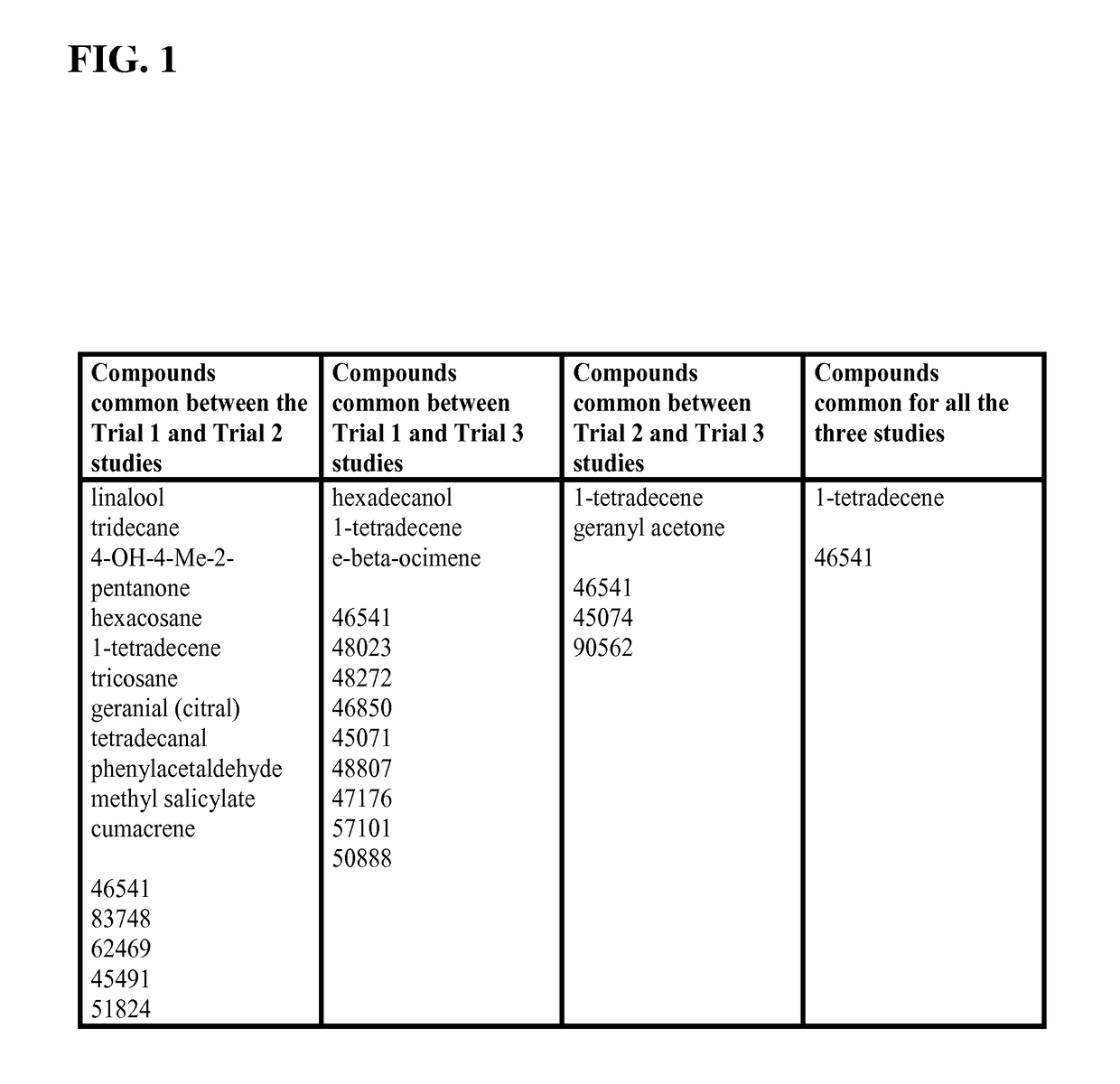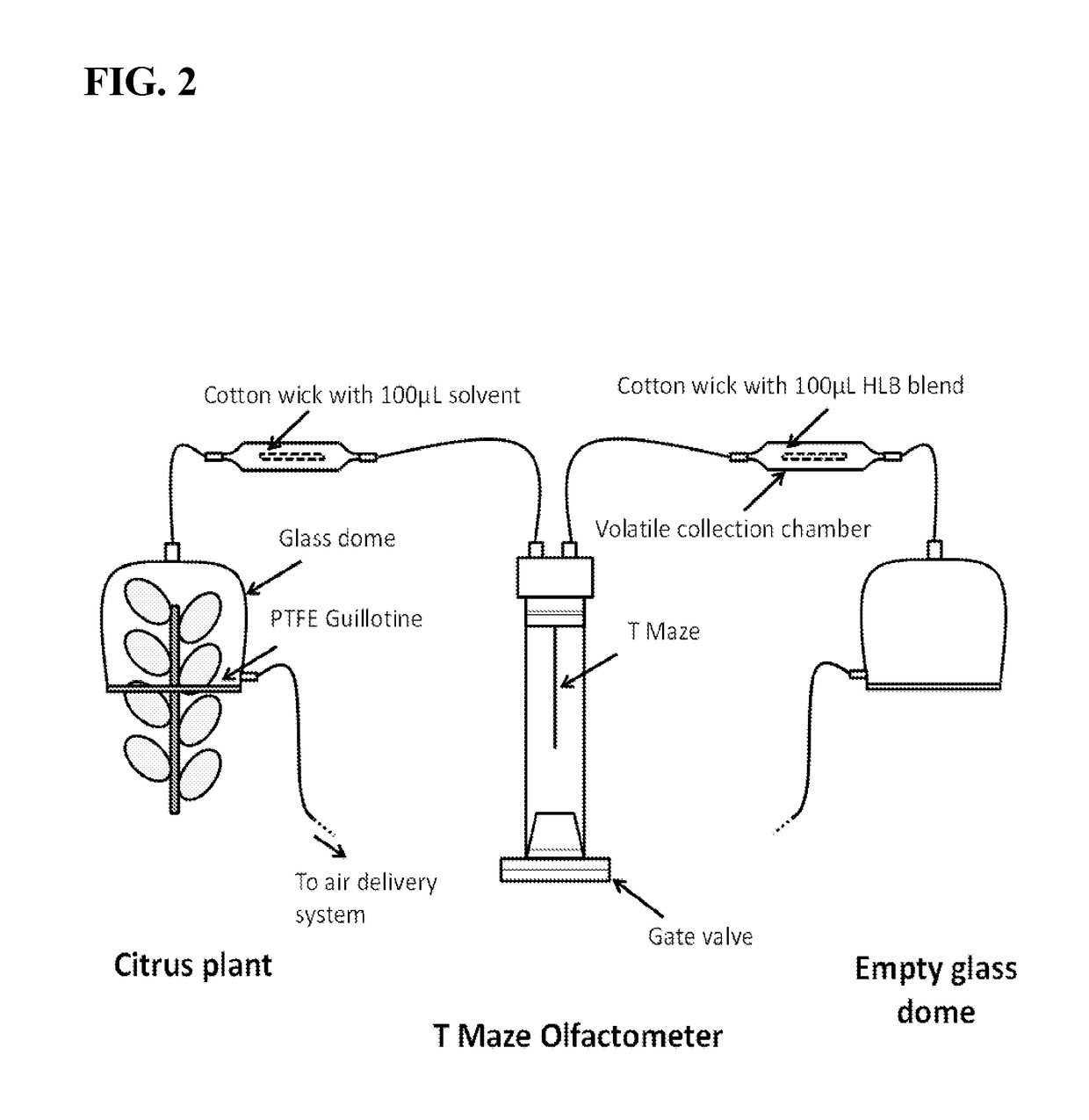Chemical lure for asian citrus psyllid
a technology of diaphorina citri and psyllid, which is applied in the field of chemical lures for diaphorina citri (asian citrus psyllid), can solve the problems of insecticide resistance and negative affecting the environmen
- Summary
- Abstract
- Description
- Claims
- Application Information
AI Technical Summary
Benefits of technology
Problems solved by technology
Method used
Image
Examples
example 1
Blends of Volatile, Phytopathogen-Induced Odorants can be Used to Manipulate Vector Behavior
[0066]The Example demonstrates the development of a chemical lure for Diaphorina citri, commonly known as the Asian citrus psyllid. Volatile organic compounds (VOCs) are emitted from all plants and these VOCs are important means of communication between plants and insects. It has been documented that pathogen infections alter VOC profiles rendering infected plants more attractive to specific vectors transmitting these pathogens than uninfected plants, thus potentially aiding in pathogen propagation. Mimicking these chemical cues might enable insect attraction away from the plant or disruption of host finding behavior of the vector. However, the practical implications have not been fully explored.
[0067]In this study, it was investigated whether it is possible to exploit the “deceptive host phenotype hypothesis” for practical application to attract insect vectors by identifying and mimicking th...
example 2
al Analysis of Attenu Assays
[0097]This Example elaborates on the data presented in Example 1 and provides the average values (±SE) of the areas under the fluorescence curves for the Attenu assays as described in Example 1 (See FIG. 4, FIG. 5, FIG. 6, FIG. 7, and FIG. 8).
[0098]Screening D. citri Chemosensory Proteins with Compound Mixtures Using the Attenu Assay System
[0099]The Attenu assays indicated that none of the compounds bound to any of the D. citri chemosensory proteins when tested individually (data not shown). However, from Example 1, the equimolar mixture of all compounds did show moderate binding to DcOBP1 (FIG. 3). Mixtures were created with ratios of compounds as listed in Table 1 (total concentration of all compounds 10 μM) with the intention to represent typical semiochemical emissions from uninfected or infected trees under assay conditions. The summary of assay results is shown in FIG. 4-FIG. 8 and elaborated upon in Example 1. The results indicate interaction betwe...
example 3
rmulation for Synthetic Lures of Asian Citrus Psyllids
[0100]This Example describes an additional formulation for a synthetic chemical lure which may be used as an attractant of Asian citrus psyllids (ACP). This formulation reconstitutes the odor of HLB-infected trees and is attractive to ACP in laboratory conditions. This formulation is also more attractive to ACP than the odor of a non-HLB infected citrus tree.
Materials and Methods
[0101]The Materials and Methods used in this Example, unless stated otherwise, may be found in Example 1 above.
Results
[0102]From Example 1, Applicants described a synthetic chemical lure that was an attractant of ACP (See FIG. 9, FIG. 11A, FIG. 11B). As can be seen in FIG. 11A, odors from HLB-infected trees and odors from healthy trees differed significantly. The artificial synthetic blend was also found to outperform (e.g. to be more attractive to ACP) than the odor of a healthy tree.
[0103]In efforts to improve the synthetic blend above, compound subtrac...
PUM
| Property | Measurement | Unit |
|---|---|---|
| molar ratio | aaaaa | aaaaa |
| molar ratio | aaaaa | aaaaa |
| molar ratio | aaaaa | aaaaa |
Abstract
Description
Claims
Application Information
 Login to View More
Login to View More - R&D
- Intellectual Property
- Life Sciences
- Materials
- Tech Scout
- Unparalleled Data Quality
- Higher Quality Content
- 60% Fewer Hallucinations
Browse by: Latest US Patents, China's latest patents, Technical Efficacy Thesaurus, Application Domain, Technology Topic, Popular Technical Reports.
© 2025 PatSnap. All rights reserved.Legal|Privacy policy|Modern Slavery Act Transparency Statement|Sitemap|About US| Contact US: help@patsnap.com



